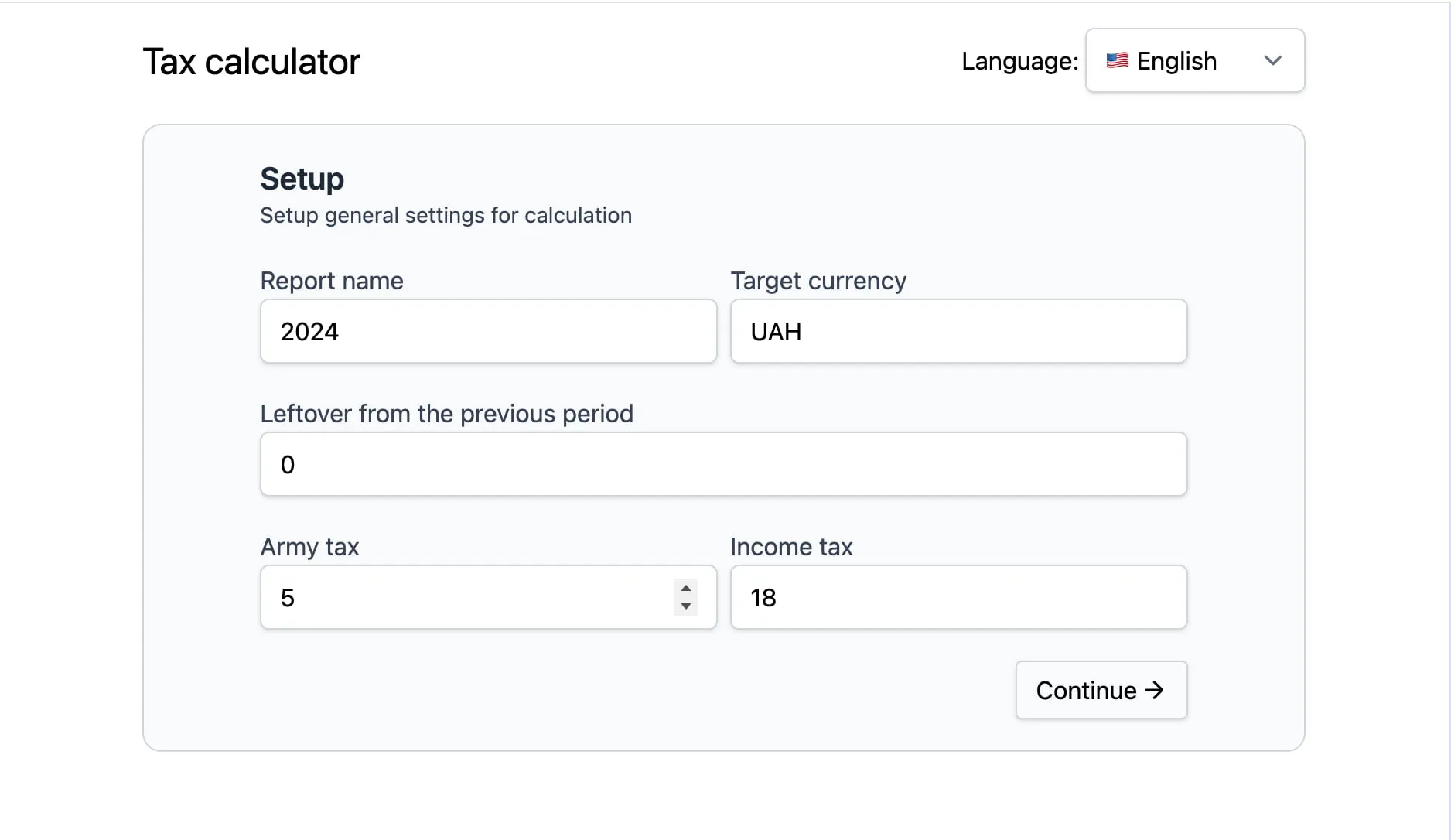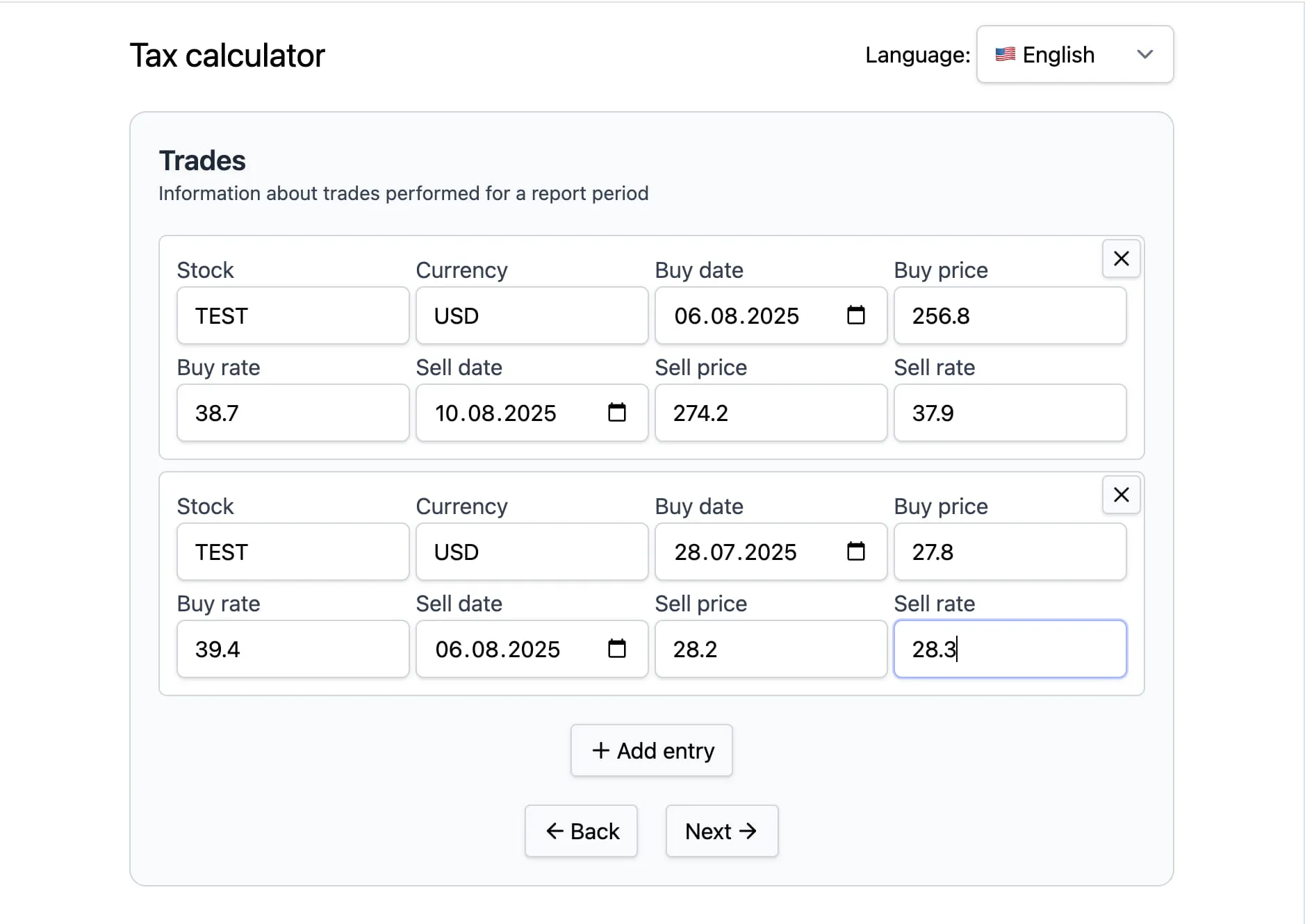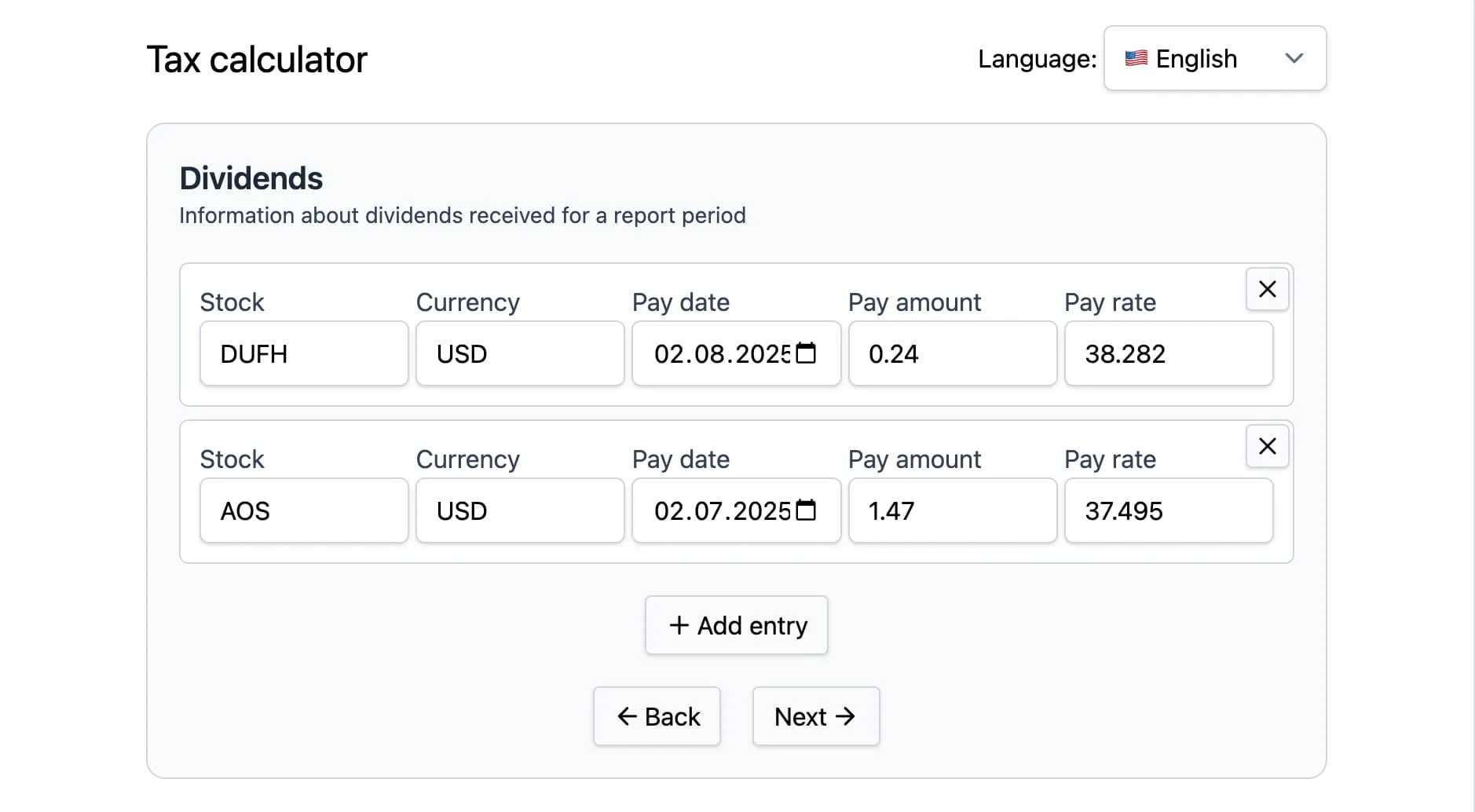Building a wizard form
With react-hook-form, zod & zustand
9 min read
In my day-to-day work, forms, and especially wizard forms are one of the hardest frontend challenges. And I’m not satisfied with my current approach to building them.
So I decided to kill two birds with one stone: research more modern & robust way of building wizard forms and build something useful for my wife. Well, now when I think of it, I’m actually killing three birds: I’m also writing an article about it 😜
Current approach
Let’s take a step back, and look at how current approach fails to scale.
First of all, it is based on React context. And there’s nothing really bad about it, it’s just sometimes (especially when the shared state grows) it becomes really hard to keep it performant.
Secondly, form validation is based on useImperativeHandle (I know, ugly 🥲), where basically child components are validating a pieces of the whole form, and it’s called from the parent component to validate the whole step before proceeding. In my opinion, this is the messiest part of the setup, and what drove me to research alternatives.
Task ahead
I’m a big fan of POC (proof-of-concept), but, unfortunately, I can’t disclose the project that I’m working on. So I had to think about something fairly complicated that would cover all of the needs for my work, be something interesting, and useful. It’s a tricky balance to handle! But thankfully, my wife showed me how messy her taxes calculations in Excel are, so I decided to build small utility wizard that will collect all information about trades and dividends and calculate everything that is needed automatically.
This wizard will consist of four screens:
- Setup step - On this step we’ll setup a couple of variables that will be used throughout the form.
- Trades step - This form is essentially an array of entries, which can be dynamically added/removed.
- Dividends step - Same as previous step, this one again is dynamic list of entries.
- Results step - This is where everything is calculated.
Let’s define fields for all of the steps first.
On the setup step:
- name of the report
- leftover from the previous year (amount of money lost when selling stocks)
- target currency (currency in which all results will be displayed)
- income tax (the percentage for the income, for example 18% in Ukraine)
- army tax (5% in Ukraine)
On the trades step, each entry:
- stock name
- stock currency
- date bought
- buying price
- exchange rate for buying date
- date sold
- selling price
- exchange rate for selling date
On the dividends step, each entry:
- stock name
- stock currency
- date paid
- amount paid
- exchange rate for the paid date
Of course, I should say that this form is not financial advice in any way, I’m building it for personal use only, and sharing it to only show interesting technical decisions.
Approach
The approach that I’ve chosen is as follows:
- Global state that will store the whole wizard state
- Centralized validation of each step with schemas
- react-hook-form for actual form inputs
By storing our state in the global store we’ll be able to easily share the data between steps, and there’ll be a central place if we’ll need to do something cross-steps. By centralizing validations with schemas we’ll no longer have validations spread out in every component, and get rid of imperative handles.
Schema validation
In the past I had pretty limited experience with zod, but I didn’t realise how powerful this library is! In essence, it’s a library to validate data with schemas, but applications of it are limitless.
Let’s define our schemas with zod:
import * as z from "zod";
export const DEFAULT_TARGET_CURRENCY = "UAH";
export const DEFAULT_ARMY_TAX = 5;
export const DEFAULT_INCOME_TAX = 18;
const num = (val: unknown) => {
if (val === "" || val === undefined) return undefined;
const num = Number(val);
return isNaN(num) ? undefined : num;
};
export const SetupSchema = z.object({
name: z.string().nonempty(),
targetCurrency: z
.string()
.transform((val) => (val === "" ? undefined : val))
.default(DEFAULT_TARGET_CURRENCY),
leftover: z.preprocess(num, z.number().min(0).optional()).default(0),
armyTax: z
.preprocess(num, z.number().min(0).max(100).optional())
.default(DEFAULT_ARMY_TAX),
incomeTax: z
.preprocess(num, z.number().min(0).max(100).optional())
.default(DEFAULT_INCOME_TAX),
});
export type SetupSchemaType = z.infer<typeof SetupSchema>;
export const TradeSchema = z
.object({
stockName: z.string().trim().nonempty(),
stockCurrency: z.string().trim().nonempty(),
buyDate: z.iso.date(),
buyPrice: z.number(),
buyExchangeRate: z.number(),
sellDate: z.iso.date(),
sellPrice: z.number(),
sellExchangeRate: z.number(),
})
.refine((data) => new Date(data.buyDate) < new Date(data.sellDate), {
message: "Buy date must be before sell date",
path: ["buyDate"],
});
export type TradeSchemaType = z.infer<typeof TradeSchema>;
export const TradesSchema = z.object({
trades: z.array(TradeSchema),
});
export type TradesSchemaType = z.infer<typeof TradesSchema>;
export const DividendSchema = z.object({
stockName: z.string().trim().nonempty(),
stockCurrency: z.string().trim().nonempty(),
payDate: z.iso.date(),
payAmount: z.number(),
payExchangeRate: z.number(),
});
export type DividendSchemaType = z.infer<typeof DividendSchema>;
export const DividendsSchema = z.object({
dividends: z.array(DividendSchema),
});
export type DividendsSchemaType = z.infer<typeof DividendsSchema>;This schema neatly describes every step form, which fields are required, what types they have and with refine schemas also allow for cross-field validations.
Global store
In the past, I also worked with several global state libraries, for example, redux. Honestly, zustand that I picked for this task is pretty similar to redux, here’s a comparison. The main difference is that zustand does not require to setup a provider, which simplifies setup, so that’s why I’ve picked it.
Let’s implement a global state for the wizard:
import { create } from "zustand";
import {
DEFAULT_ARMY_TAX,
DEFAULT_INCOME_TAX,
DEFAULT_TARGET_CURRENCY,
type DividendsSchemaType,
type SetupSchemaType,
type TradesSchemaType,
} from "./schema";
type TaxWizardState = {
currentStep: number;
setup: SetupSchemaType;
trades: TradesSchemaType["trades"];
dividends: DividendsSchemaType["dividends"];
};
type TaxWizardActions = {
back: () => void;
goTo: (step: 0 | 1 | 2) => void;
completeSetup: (newSetup: SetupSchemaType) => void;
completeTrades: (newTrades: TradesSchemaType["trades"]) => void;
completeDividends: (newDividends: DividendsSchemaType["dividends"]) => void;
reset: () => void;
};
export const useTaxWizardStore = create<TaxWizardState & TaxWizardActions>()(
(set, _get, store) => ({
currentStep: 0,
setup: {
name: "",
targetCurrency: DEFAULT_TARGET_CURRENCY,
leftover: 0,
armyTax: DEFAULT_ARMY_TAX,
incomeTax: DEFAULT_INCOME_TAX,
},
trades: [],
dividends: [],
back: () =>
set(({ currentStep, ...other }) => ({
...other,
currentStep: Math.max(currentStep - 1, 0),
})),
goTo: (step) =>
set(({ currentStep, ...other }) => ({
...other,
currentStep: step,
})),
completeSetup: (newSetup) =>
set(({ currentStep, ...other }) => ({
...other,
setup: newSetup,
currentStep: currentStep + 1,
})),
completeTrades: (newTrades) =>
set(({ currentStep, ...other }) => ({
...other,
trades: newTrades,
currentStep: currentStep + 1,
})),
completeDividends: (newDividends) =>
set(({ currentStep, ...other }) => ({
...other,
dividends: newDividends,
currentStep: currentStep + 1,
})),
reset: () => set(store.getInitialState()),
}),
);In this store, I’ve defined a simple state for the current step, defaults for every step, and some utility functions, that will be called on every step submissions.
react-hook-form
Lastly, it’s time to tie it all together with react-hook-form, a library that I didn’t have experience at all, because on my work, all of the inputs are custom, and state for them is managed manually. To be honest, it was a little bit harder and at the same time simpler to setup.
While react-hook-form was new to me, I quickly saw the benefit: no more manually
wiring up useState for each field.
Let me show you a couple of parts of the forms:
export function SetupForm() {
const { t } = useTranslation();
const setup = useTaxWizardStore((state) => state.setup);
const completeSetup = useTaxWizardStore((state) => state.completeSetup);
const {
register,
handleSubmit,
formState: { errors, isSubmitting },
} = useForm({
resolver: zodResolver(SetupSchema),
defaultValues: setup,
});
const onSubmit = (data: SetupSchemaType) => {
completeSetup(data);
};
return (
<form
className="mx-auto grid max-w-[600px] grid-cols-1 gap-5"
onSubmit={handleSubmit(onSubmit)}
>
<div className="grid grid-cols-2 gap-2">
<Input
id="setup-name"
label={t("setup.name")}
error={errors.name?.message}
type="text"
required
autoComplete="name"
placeholder="Enter the report name"
{...register("name")}
/>
{/* other inputs ... */}
</div>
<Button
type="submit"
className="justify-evenly justify-self-end"
disabled={isSubmitting}
>
{t("continue")} <ArrowRight className="size-4.5" />
</Button>
</form>
);
}Everything related to the form is basically managed in the useForm hook. This,
honestly, threw me up at first, I was wondering where the state is, and how it’s
submitting the data. But now I think it’s much simpler than defining everything
manually.
The second example is with dynamic array of entries:
export function TradesForm() {
const back = useTaxWizardStore((state) => state.back);
const trades = useTaxWizardStore((state) => state.trades);
const completeTrades = useTaxWizardStore((state) => state.completeTrades);
const {
register,
control,
handleSubmit,
formState: { errors, isSubmitting },
} = useForm({
resolver: zodResolver(TradesSchema),
defaultValues: { trades },
});
const { fields, append, remove } = useFieldArray({
control,
name: "trades",
});
const onSubmit = (data: TradesSchemaType) => {
completeTrades(data.trades);
};
return (
<form className="grid grid-cols-1 gap-5" onSubmit={handleSubmit(onSubmit)}>
<ul className="space-y-2">
{fields.map((item, index) => (
<li
key={item.id}
className="grid grid-cols-2 md:grid-cols-4 lg:grid-cols-8 gap-1 relative p-3 bg-white border border-gray-300 rounded-md"
>
<Input
id={`trades.${index}.stockName`}
label="Stock"
type="text"
error={errors.trades?.[index]?.stockName?.message}
required
placeholder="Stock name"
{...register(`trades.${index}.stockName`)}
/>
{/* other form fields ... */}
<Button
type="button"
icon
onClick={() => remove(index)}
className="absolute top-0.5 right-0.5"
title={`Remove entry ${index}`}
>
<X className="size-4.5" />
</Button>
</li>
)}
</ul>
<Button
type="button"
className="justify-self-center"
onClick={() =>
append({
stockName: "",
stockCurrency: "",
buyDate: "",
buyPrice: 0,
buyExchangeRate: 0,
sellDate: "",
sellPrice: 0,
sellExchangeRate: 0,
})
}
>
<Plus className="size-4.5" /> Add entry
</Button>
{/* Another buttons, such as submit*/}
</form>
);
}I really enjoyed working with field arrays, to be honest. It required so much code and covering of edge cases to get multiple rows of inputs to work, and in this library - it’s just built-in! That is so awesome!
Results
Here’s a couple of screenshots of resulting utility
Setup step:

Trades step:

Dividends step:

Of course, I haven’t included the full code examples, but they are available in this repository: tax-calc. Beware, it’s not “production-ready” in any sense, but I think it demonstrates an overall idea on how to better structure such complicated forms. It requires a little bit of polish to be released, in my opinion.
Conclusions
In the end, this little project proved that a schema-first approach with zod, a lightweight global store like zustand, and react-hook-form can make wizard forms much cleaner and less painful to build. It started as a quick experiment for my wife’s taxes, but now I have a solid structure I can reuse at work (and maybe even improve with persistence, translations, and CSV imports down the line).